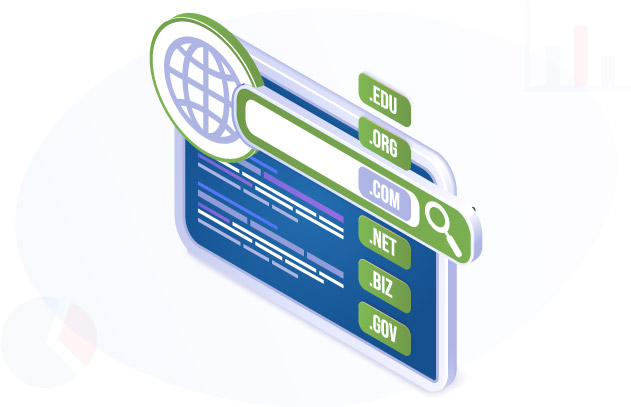
Have you ever clicked on a link only to be greeted by the dreaded “404 – Page Not Found” error message? Broken links are the cause of this frustrating experience. They are not only a nuisance for users but also a major concern for website owners and SEO professionals.
Drawing from our wealth of experience in the digital marketing realm, we’ve crafted this comprehensive guide to help you understand the ins and outs of broken links.
We’ll cover what they are, why they matter, and, most importantly, how to fix them to ensure a seamless user experience and optimal website performance.
Table Of Contents
Summary
A broken link is a hyperlink that does not direct users to the intended destination, leading to error messages like “404 – Page Not Found.”
A broken link can negatively impact user experience, bounce rates, crawling and indexing, wasted crawl budget, and link equity, affecting SEO and website performance.
Common causes of broken links include typos, deleted or renamed pages, website restructuring, domain name changes, and moved downloadable content.
What Is A Broken Link?
A broken link is a hyperlink that fails to direct users to the intended destination.

When you click on a broken link, you will encounter an error message, such as a 404 Page Not Found or 400 Bad Request.
5 Reasons Why Broken Links Are Bad
Broken links can harm your SEO in several ways, including crawling, indexing, and simply visitors being unable to find a page on your website.
If you find things like this, I’d fix it primarily for your users, so that they’re able to use your site completely. I wouldn’t treat this as something that you’d need to do for SEO purposes on your site, it’s really more like other regular maintenance that you might do for your users.
– John Mueller, Search Advocate at Google
Here is how a dead link can affect your SEO:
1. User Experience
Search engines like Google are continuously working to provide the best user experience for the reader.

They may view websites with too many broken links as neglected, which could negatively impact your search rankings.
2. Bounce Rate
Users who can’t find the information they want, leave.
The shorter the time visitors spend on your site, the higher your bounce rate [1].
A high bounce rate signals search engines that your site isn’t meeting user needs, resulting in lower search rankings.
3. Crawling And Indexing
Search engines rely on links to crawl and index web pages [2]. When a dead link obstructs this process, some pages on your site might not be indexed correctly.

This means that these pages won’t appear in search results, reducing the visibility of your content and potentially limiting your site’s overall traffic.
4. Wasted Crawl Budget
Each search engine has a limited crawl budget [3]. It is the number of pages they’ll crawl on your site during a specific period.
Broken links consume your crawl budget as search engines spend time trying to crawl non-existent or dead-end 404 pages. This wasted time could be better spent crawling and indexing your valuable, live content.
5. Link Equity
Broken backlinks represent lost opportunities to pass authority and value from other websites to yours.

When backlinks lead to 404 pages on your site, they’re not contributing to your site’s authority, which could affect your chances of ranking higher in search results.
What Causes Broken Links?
1. Typos
Typos are frequently made across websites. If you don’t catch the error before publishing the content, anyone who clicks the link will be directed to a 404 error page rather than the intended article.
2. Deleted Pages
You might delete a page because it is outdated, contains irrelevant content, or even by mistake. Suppose you had a promotional event page that’s no longer relevant, so you deleted it.
However, your homepage still links to the now-deleted page, and users who follow the link will get a 404 error.
3. Renamed Pages
Similarly, if a page gets renamed, any links pointing to the old URL will be broken. If you had a blog post called “How to do broken link building” and then decided to change the title to “The comprehensive guide to broken link building,” any links that pointed to the old URL will result in a dead link.

4. Website Restructuring
We are always trying to structure our website in the best way. Sometimes we make significant changes, such as moving pages around or altering the URL structure.
For example, you’ve combined your “example.com/products” and “example.com/services” pages into one “example.com/offers” page. If you don’t update the old pages’ links to the new ones, users will end up on error pages.
5. Domain Name Change
A domain name change also can lead to broken internal links if not handled carefully. For instance, you rebrand from “old-example.com” to “new-example.com.”

In this case, you must update your internal links to reflect the new domain. Any other case will result in a broken link.
This can be especially problematic if you’ve built up a lot of backlinks to your old domain since those links will no longer be applicable.
6. Moved Downloadable Content
Shifting downloadable content like PDFs, images, or videos to new locations without updating links will result in a broken internal link.
For example, you moved a popular eBook from “example.com/ebooks/old-folder” to “example.com/ebooks/new-folder.” Undoubtedly, users who click the old link will encounter an error.
How To Find Broken Links
Finding broken links isn’t that hard, and there are many broken link tools to help you.
1. Manually
One basic method for checking broken links is to do it manually. Click on every link on your website and check if it leads to a working page or a 404 error page.

While this can be time-consuming, it’s an effective way to catch broken links that might have slipped through the cracks.
2. Chrome Inspect
Chrome Inspect is a built-in tool in Google.
Simply right-click on any page on your website and select “Inspect.”
This will open up the “Inspect” panel, where you can click on the “Console” tab.
Refresh the page, and any 404 errors that appear are a dead link.
3. Google Search Console
Google Search Console is a free Google tool. It gives you a detailed report of your site’s crawl errors, including broken links. It can also show you which pages on your site have a dead link and suggest how to fix them.
4. SEO Tools
SEO tools also can have the work done. SEMrush and Ahrefs can scan your entire site and give you a report of any broken links or any broken pages you are linking to.

Additionally, they can provide insights into your site’s overall SEO health and suggest how to improve it.
5. Screaming Frog
Screaming Frog is a desktop program available for Windows and Mac. This application crawls your entire site and gives you a report of broken links and other valuable SEO insights.
It can help you identify other technical issues on your site, such as duplicate content and missing metadata.
How To Fix A Broken Link
Fixing broken links is essential for our website’s health, and these are simple ways how to do it.
1. 301 Redirect
A 301 redirect is a permanent redirect from one URL to another [4]. It tells search engines and users that the content they’re looking for has been permanently moved to a new location.

If you have a broken link on your website that points to an old blog post, you could set up a 301 redirect from the old URL to the new URL. This approach redirects anyone who clicks on the old link to the new post.
2. Update The Link
A little typo leads to significant SEO issues. So check the URL; if there are any typos or it points to the wrong page, just update the link with the right one.
3. Delete The Broken Link
If you have a broken link pointing to pages that no longer exist and can’t be redirected, it’s better to delete them altogether. This will ensure that users don’t encounter 404 error pages and can navigate your site smoothly.
4. Regularly Check
It’s essential to regularly check your site for broken links and fix them promptly. You can schedule monthly checkups to ensure that any broken links are identified and fixed promptly.

This will help you maintain a smooth user experience and improve your site’s SEO.
FAQs
Are Broken Links Bad?
Yes, broken links are bad for your website’s SEO and user experience. They can lead to crawling and indexing issues, high bounce rates, wasted crawl budgets, and lost link equity.
What Are The Types of Broken Links?
There are two main types of broken links, internal links and external links. Broken internal links point to pages or resources within your website. Broken external links, on the other hand, are links on your website that point to external websites or resources that are either no longer available or have changed their URL.
What Is A Broken Link Checker?
A broken link checker is a tool that scans a website and detects any broken links or 404 errors. It helps website owners identify and fix broken links, which can negatively impact the user experience and SEO.
Remove Broken Links For Successful Website Performance
Having broken outgoing links or broken backlinks is pretty normal. However, take care because broken links can be can negatively impact user experience, search engine rankings, and website traffic.
It’s essential to regularly check broken links and fix them promptly using link-building tools like Google Search Console, SEMrush, and Ahrefs. By following this guide, you are ready to kick broken links to the curb and unleash the full potential of your website.
References
- https://www.searchenginejournal.com/website-bounce-rate/332439/
- https://developers.google.com/search/docs/fundamentals/how-search-works
- https://www.oncrawl.com/technical-seo/googles-crawl-budget-optimization/
- https://developers.google.com/search/docs/crawling-indexing/301-redirects
